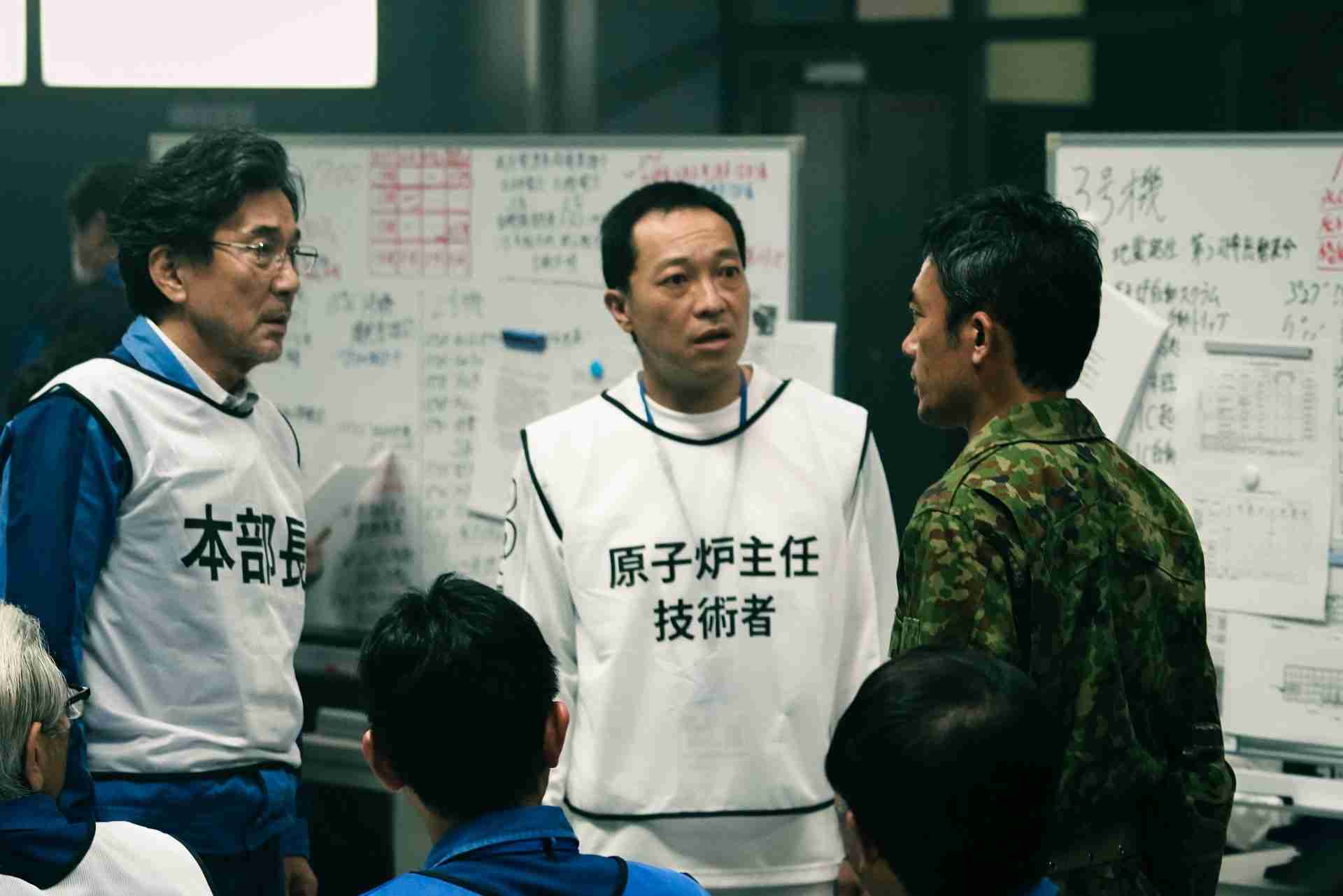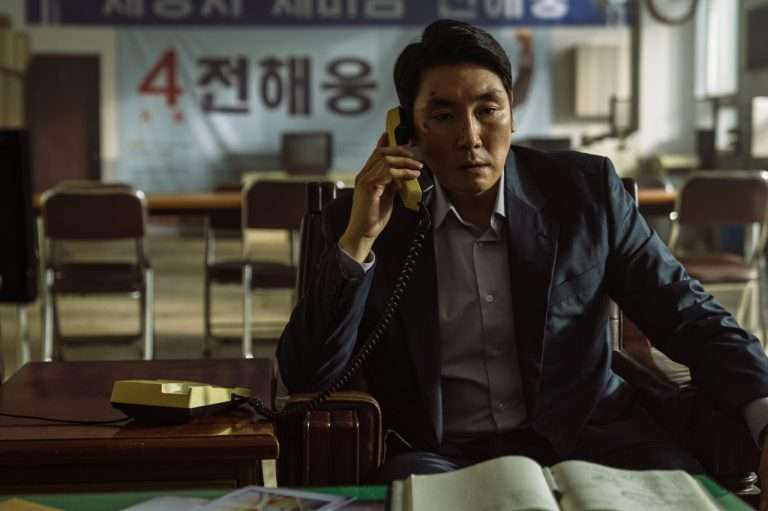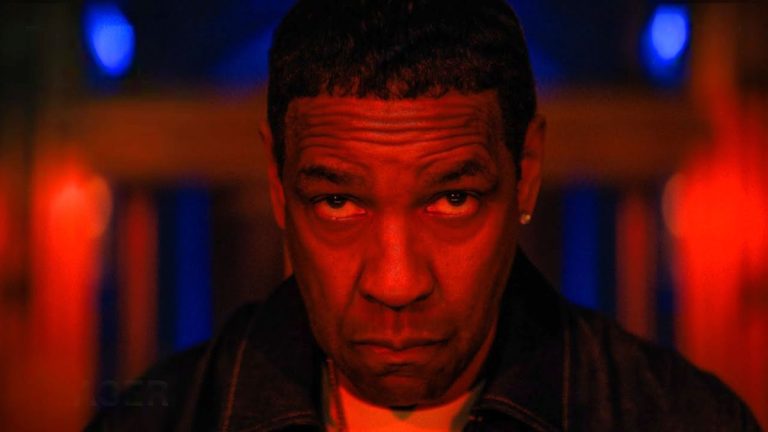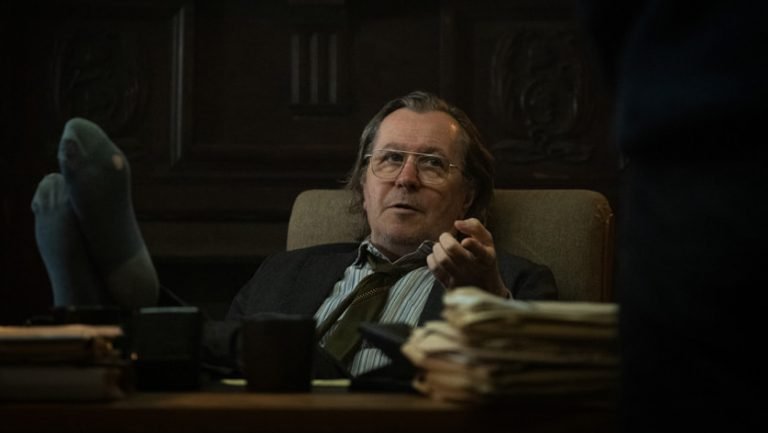“The Days,” currently streaming on Netflix, is a melodramatic but detailed dramatization of Japan’s Fukushima Nuclear Disaster. Written and created by Jun Masumoto, the eight-part miniseries is based on the Fukushima Daiichi Nuclear Power Station’s Manager, Masao Yoshida’s testimony and journalist Ryusho Kadota’s book “On The Brink: The Inside Story of Fukushima Daiichi.”
The obvious comparison with HBO’s 2019 hit show “Chernobyl” is not unwarranted. However, unlike the HBO show, “The Days” is a bit overblown with tantalizing slo-mo shots and repetitive moments overstaying their welcome. The series starts like a claustrophobic horror film, with a dread of the tsunami and the fear of its aftermath. Slowly, it becomes an engaging drama featuring the people who respond to the nuclear disaster, trying their best to thwart a catastrophe. Despite the detail-heavy nature, the series mostly manages to capture the dramatic moments of this, essentially, man-vs-nature tale – the pain, the sacrifice, and the horror of it all.
The Days (Netflix Miniseries) Recap:
The Disaster
On March 11, 2011, Japan was hit by its most powerful recorded earthquake, known as the “Tohoku Earthquake and Tsunami.” One of its most significant impacts is the topic of this miniseries. The event is known as the “Fukushima Nuclear Disaster.” The earthquake, and the subsequent tsunami it caused, hit the Fukushima Daiichi Nuclear Power Plant. The tsunami and its high waves destroyed the power generators of the plant, depriving the multi-unit nuclear plant and its control room of electricity.
The earthquake came as a double-edged sword. Once you survive the onslaught of the earthquake and the tsunami, which unit worker young Koki Kirihara could not, you are challenged with the disastrous possibility of nuclear reactors getting destabilised. The Power Plant Station Manager, Masao Yoshida, narrates the events that followed. As a result of losing power, the nuclear reactors in each unit began to get heated and the cooling mechanism could not be deployed without the power.
This leads to a series of events that would need Yoshida and the control-room lead, Maejima, to be the first team responders. Their increasingly toughening job would be to control the radiation from the nuclear reactor and avoid a Chernobyl-like catastrophe. The nuclear reactor is under a private company’s control; the company is referred to as TOEPCO here. Amidst pressure from TOEPCO leadership, who are also under pressure from the Japanese Prime Minister, Yoshida and his team start to put their lives at stake to get the power plant under control.
Consecutive Hits
The highly volatile situation keeps getting worse for Yoshida and his team. First, they try to get an alternative source of power. One of the brighter ideas in that pursuit was to utilize car batteries. However, that could only get a fraction of the electric power they would require. Yoshida’s next approach was ‘venting.’ It is a process where a small amount of radioactive gas from the nuclear chamber is intentionally released. However, the harmful substance is filtered so that the air remains substantially toxin-free.
However, since automatic on and off switches are not working, the only way to release the gas and pressure would be to manually open the valves. While Yoshida’s team tries to open the inner AO valve via air pressure, Maejima’s team prepares to send the veteran workers down the reactor chamber to open the other MO valve. Despite the hazmat suit and the masks, the workers are bound to get exposed to heavy radiation, thus almost forfeiting their lives. Workers Furuya and Osugi gladly accept that and become successful in opening the MO valve.
But, the joy is short-lived as consecutive aftershocks of the earthquake hit the power station once again, crashing debris on the buildings and blocking roads. The roads are also perilous, with manholes being swept away by the tsunami. As if things could not get worse, a huge explosion shakes everyone inside the station chamber and in the control room.

The Hydrogen Explosions
At first, Yoshida expects the worst – that one of the many units finally exploded, with nuclear rods getting exposed in the open environment. However, it slowly becomes clear that it is not the case. It is a hydrogen explosion, from within the containing chambers, though it does not immediately fill the environment with high radiation.
However, the effect of the thundering explosion is also devastating as it completely disrupts the plan to lay the pipes to inject water inside the nuclear reactor. Despite the government’s reluctance, Yoshida has approved a plan to inject saltwater inside the nuclear reactor. The reactors need some cooling material to stop the emission due to heat. Freshwater is generally the best source of TOEPCO. However, due to the disaster, freshwater is scarce. Yet salt water is in abundance due to the tsunami. So the plan to inject salt water to stop the nuclear reactor from heating was undertaken by Yoshida. But the hydrogen explosion put a stop to it by ruining the water pipes.
The Politics
During all these, we see the politics of the scenario as well. The agitated prime minister often being the source of that. Understandably, the prime minister is under heavy pressure, with the media scrutinizing each step of the government. However, as Yoshida succinctly explains, it is the workers of Yoshida’s team, the people of the fire department, and the first aid team, who are throwing their lives away to mitigate this problem. It is easy for the prime minister to demand a solution but it is entirely a different ordeal finding one.
The prime minister’s job gets tougher as the US begins to intervene. When the President of the USA orders an evacuation of all American citizens from Japan, the prime minister cannot help but plead the US president to not do that as such a move sends the message to the world that Japan is turning into a radioactive wasteland and that the government is too inept to prevent it.
The Days (Netflix Miniseries) Ending Explained:
How did Yoshida and his team manage to stabilize the reactors?
When politicians are trying their best to salvage their reputations, Yoshida, Maejima, and their teams are desperately trying to solve the crisis. Even with help from the fire trucks, the injection of water plan does not work as the water pipes had already been destroyed. The prime minister asks the military to intervene and drop water from a helicopter as a last resort. The aviation team does that, but it needs a continuation of that. One or two helicopter trips cannot manage that.
It is at that time that the vice president of TOEPCO arranges for ‘giraffes.’ These are the machines used by landscaping and building companies to pour concrete at a higher elevation. These machines can reach the height of 4-5 stories. ‘Giraffes’ can be rewired to inject water from a 5-story high position. Right on top of the nuclear reactors.
This finally solves the problem. With water, the temperature starts to decrease and the nuclear reactors start to stabilize gradually.
How did the nuclear accident happen in the first place?
Hindsight is always insightful. It provides us with the ‘what could have been’ perspective. In hindsight, there could be many reasons behind the accident. The simplistic blame goes to nature. Nature strikes with vengeance, with consecutive hits in the form of earthquakes, tsunamis, and constant aftershocks. But is it the fault of nature?
Yoshida’s testimony reflects the true nature of the fault. The fallacy is within. It is within us. Humanity failed the moment we engaged in a race to arm ourselves with weapons of mass destruction. Yoshida’s testimony is relevant to Japan, but it applies to the whole world. The race to stockpile nuclear weapons takes a toll. The area of Fukushima was a green pasture, which was cleared out to build the nuclear power station. Yoshida wonders if nature had had enough of such activities. The way the tsunami, and its aftermath, destroyed the power station forces one to contemplate such thoughts.
Apart from this philosophical rumination, the actual official analysis of the event also highlighted some key parties as the culprits. The series highlights how one such culprit was the prime minister’s office and its early meddling in the affairs, which caused significant delays in tackling the problem at hand. Amidst the tension and fear of losing their colleagues, Yoshida’s team had to arrange special kits for the prime minister’s visit to the center, which was not the least helpful.
Another party to blame was TOEPCO (TEPCO in reality). There was a significant lack of crisis management from the upper management of TOEPCO, with inefficient and ill-fitted people occupying the positions. Yoshida and his team had to figure out everything on their own. There were no predetermined guidelines, which shows that TOEPCO was not prepared at all for such events. A serious lack of foresight on their part.



![Guava Island [2019] Review: Donald Grover’s passion project is more symbolic than substantial](https://79468c92.delivery.rocketcdn.me/wp-content/uploads/2019/04/Guava-Island-Grover11-768x581.jpg)
![The Insult [2017]: Habitat International Film Festival Review](https://79468c92.delivery.rocketcdn.me/wp-content/uploads/2018/03/The-insult-2-768x432.jpg)


